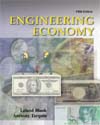Inflation, treated computationally as an interest rate, makes the cost of the same product or service increase over time due to the decreased value of money. There are several ways to consider inflation in engineering economy computations in terms of today’s (constant-value) dollars and in terms of future dollars. Some important relations are:
Inflated interest rate: if = i + f + if
Real interest rate: i = (if - f) / (1 + f)
PW of a future amount with inflation considered: P = F(P/F,if,n)
Future worth of a present amount in constant-value dollars with the same purchasing power: F = P(F/P,i,n)
Future amount to cover a current amount with no interest: F = P(F/P,f,n)
Future amount to cover a current amount with interest: F = P(F/P,if,n)
Annual equivalent of a future dollar amount: A = F(A/F,if,n)
Annual equivalent of a present amount in future dollars: A = P(A/P,if,n)
Hyperinflation implies very high f values. Available funds are expended immediately because costs increase so rapidly that larger cash inflows cannot offset the fact that the currency is losing value. This can, and usually does, cause a national financial disaster when it continues over extended periods of time. |



 2002 McGraw-Hill Higher Education
2002 McGraw-Hill Higher Education

 2002 McGraw-Hill Higher Education
2002 McGraw-Hill Higher Education